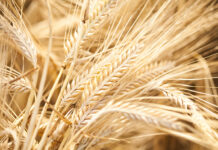Nqobile Bhebhe, Zimbabwe
The British Department for International Development (DFID) estimates that by 2050, climate change would have reduced Zimbabwe agricultural sector productivity by five percent, placing food security at risk .
The aid agency said if no measures are taken, the effect will “compound existing difficulties for the estimated one million Zimbabweans who are chronically food insecure”.
“It is estimated that farm productivity in Zimbabwe will drop by five percent by 2050 as a result of climate change. It is already lower than its neighbours and we can’t afford any more slippage” the head of Britain’s Department for International Development (DFID) Zimbabwe, Annabel Gerry, about the 5-year programme.
Once referred to as the breadbasket of Africa, Zimbabwe used to be an exporter of maize, but now aid organisations say the country requires about two million metric tonnes a year to feed itself.
Added Gerry, “Without adapting, poverty, food insecurity, malnutrition and environmental degradation will continue to be serious challenges, particularly in rural areas. This will compound existing difficulties for the estimated one million Zimbabweans who are chronically food insecure,”.
To this end, a $30 million grant to fund a programme to build Zimbabwean smallholder farmers’ resilience against climate change has been unveiled.
The project intends to read over 180 000 people in 18 rural districts.
It will help farmers cope with climate change through the adoption of climate-smart agriculture, community-based natural resources management, productive asset creation, access to finance and value chain development.
Climate change is defined as a long-term shift in the climate of a specific location, region and planet.
It occurs when the climate of a specific area or planet is altered between two different periods of time.
Zimbabwe has one of the highest degrees of rainfall variability in the world and the climate is characterised by frequent drought years and occasional flood events. This situation will be exacerbated by climate change.
Records show that temperatures have been increasing by around 0,1°C a decade according to experts. Future scenarios predict increasing temperatures of around 2,5°C by 2050.
The timing and amount of rainfall received in Zimbabwe are becoming increasingly uncertain. There has been an overall decline of nearly 5% in rainfall across the country since 1901 with the early 1990s probably witnessing the driest period of the last century.
The frequency and length of dry spells during the rainy season have increased. Although the quantity of rainfall in a year may be normal, this may fall during violent storms. Rainfall distribution is erratic both in space and time across all the provinces of Zimbabwe.
In 2017, a study revealed that farm incomes in Zimbabwe are expected to decline by as much as 38 percent by 2050, as temperatures soar 3,4 percent in what would be an unprecedented catastrophe for agriculture.
twitter-@nqobilebhebhe








